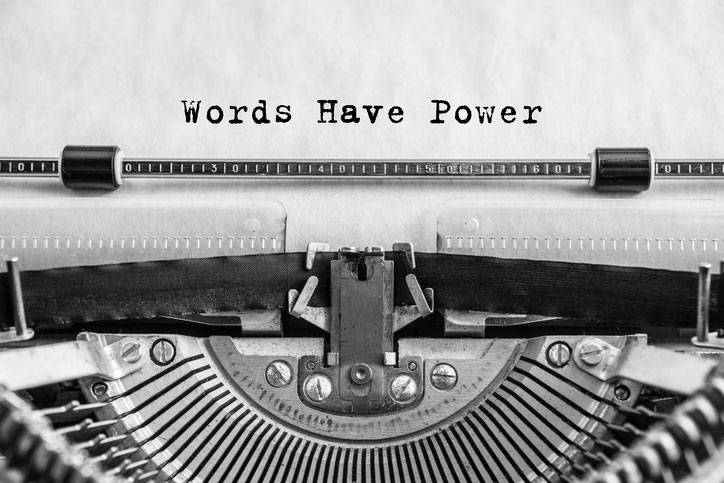Written by Haley Boyce

Fewer things are more ambiguous than the answer to the question: What is rhetoric?
If you searched for it online, you likely found conflicting or incomplete answers. But now that you’ve landed here, you’re in good hands. But we can’t just give you the answer to rhetoric and be on our way. While we could go ahead and just define rhetoric like a dictionary, we would be doing you a huge disservice.
Rhetoric is the term used to describe ideas about different texts. So basically, when you read a story (or article, essay, journal, etc.) and share your thoughts about it, those thoughts are now called rhetoric.
Rhetoric is just a fancy word for the thoughts and ideas that arise from what you’ve read.
But even that’s a little reductive. Rhetoric is really best understood as the sum of the three parts that make up the rhetorical triangle. So, let’s make like Maria von Trapp and start at the very beginning.
What is the Rhetorical Triangle?
Now let’s take those thoughts and organize them into three different points of a triangle. Label those three points ethos, pathos, and logos. It doesn’t really matter which term goes where on the triangle, as long as they are all present and that the triangle has three equal sides, since each point of the rhetorical triangle is equally important.
Now, despite the importance of ethos, pathos, and logos, which one you choose to write with will be more prominent depending on the type of essay you’re writing. This is a good place to define those points, so let’s move on.
What is Ethos?
 Ethos is a fancy way of saying, “Prove that you are qualified to speak on this topic.” Ethos is critical when writing argumentative or persuasive essays, as your goal is to get your reader to agree with you or believe your argument by the time they reach the end of your essay.
Ethos is a fancy way of saying, “Prove that you are qualified to speak on this topic.” Ethos is critical when writing argumentative or persuasive essays, as your goal is to get your reader to agree with you or believe your argument by the time they reach the end of your essay.
Ethos is something you have that lends credibility to your argument, be it some degree or credential, or years of experience.
An audience of readers is more likely to believe what you tell them if your knowhow is based on your education (maybe even where you were educated), years of experience in a related field or conducted research, your job title, or any other number of qualifications.
An example would be who we trust with medical advice. Hypothetically speaking, if a person comes down with persistent, suspicious symptoms and isn’t sure how to treat them, the sick person will pay a visit to their general practitioner. Why? Because a doctor is the first and foremost qualified person to diagnose an illness. How do we know they’re qualified to assess the symptoms and come up with a treatment plan? Their years of required education, from biology to their residency. We know that their knowledge is more accurate for this specific situation than if the sick person were to ask a lumberjack or history teacher. Not because the lumberjack and history teacher are unintelligent, but because they aren’t trained in this area of expertise. We know that doctors have the years of experience needed to qualify them to practice medicine and lumberjacks and history teachers don’t.
Even if we don’t think too hard about it, we routinely – almost innately – know that the person with the appropriate qualifications is the one we will believe and trust. This transfers to our skills as readers.
Ethos is probably the most obvious persuasive technique to identify in rhetoric because when somebody is qualified to speak on a subject with authority, they usually take advantage of the moment. It’s also the easiest persuasive technique to use for the very same reason.
If you’re writing an essay in which your goal is to persuade your reader to agree with you, there’s no easier way to do it than to have explicit authority on the subject in question.
What is Pathos?
Pathos is an appeal to your reader’s emotions.
When you’re writing with pathos, the goal is to persuade your reader to agree with you by tugging at their heartstrings.
 Think of television commercials for rescue dogs. When advertisers show us images of snowy trees with shivering pups chained to the trunks, or their sweet faces looking up at us from behind the bars of locked crates while Sarah McLachlan sings over it all (you know the one I’m talking about). Advertisers are doing their darndest to persuade us to pick up the phone to make a donation that will keep these pups and others like them safe from harm and hunger.
Think of television commercials for rescue dogs. When advertisers show us images of snowy trees with shivering pups chained to the trunks, or their sweet faces looking up at us from behind the bars of locked crates while Sarah McLachlan sings over it all (you know the one I’m talking about). Advertisers are doing their darndest to persuade us to pick up the phone to make a donation that will keep these pups and others like them safe from harm and hunger.
Another, much happier, example of pathos is Coca-Cola’s slogan, “Open a coke and a smile”. The idea being that drinking a Coke will make you happy or guarantee a good time. This is a persuasive technique because it has the power to make us think that being happier is simple – just buy a Coke.
How Much is that Pathos in the Window?
 It’s kind of fun to take a look back at how advertisers nailed us with rhetorical devices now that we know what they are. Here are some advertisements made memorable because of their effective use of ethos, pathos, and logos.
It’s kind of fun to take a look back at how advertisers nailed us with rhetorical devices now that we know what they are. Here are some advertisements made memorable because of their effective use of ethos, pathos, and logos.
Ethos:
Laughing Man Coffee, co-founded by multihyphenate Hugh Jackman, aired a commercial in which their credibility was the focus of the campaign. The ad showed the Columbian farms where the coffee is produced. Proceeds from sales of the coffee are invested to provide aid to the farmers.
Athletic and fashion brand Adidas partnered with Parley, an earth-saving organization whose goal is to protect our oceans from the harmful destruction of plastic pollution. The result is a shoe made from plastic that was once posing a threat to the most important ecosystem on the planet.
Pathos:
Procter and Gamble created a series of ads that aired during the 2016 Olympic Games that depicted how several athletes were protected and supported by their mothers throughout life. At the end, a quick flash of P&G’s logos for the brands Tide, Pampers, Bounty, Gillette, and Always.
It’s a wiener stampede! All the little dachshunds dressed as hot dogs running toward their humans who are dressed as bottles of Heinz ketchup! The heart can’t handle this much cuteness! And the fridge can’t handle how much ketchup we bought after seeing this ad!
Logos:
Billy Mayes cuts straight to the point in his commercial for OxiClean when he uses the product to clean dirty items right in front of the camera. The logic being almost undeniable.
Logos is great rhetoric for sales pitches, what can we say? In a commercial for Flex Seal, the CEO of the company (Phil Swift) slaps a piece of the wonder-tape over a stream of water spilling from a large hole in a water tank. The waterflow instantly stops, thus persuading many viewers to purchase the product because it seems to work.
What is Logos?
 Logos is the opposite of pathos.
Logos is the opposite of pathos.
Where pathos tries to persuade the reader by tapping into their emotions, logos persuades the reader with reason and logic.
Examples of this are found in persuasive or argumentative writing, but it can also be found in fiction. Take a look at this excerpt from Harper Lee’s To Kill a Mockingbird, for example:
The state has not produced one iota of medical evidence to the effect that the crime Tom Robinson is charged with ever took place. It has relied instead upon the testimony of two witnesses whose evidence has not only been called into serious question on cross-examination, but has been flatly contradicted by the defendant. The defendant is not guilty, but somebody in this courtroom is.
In this scene, Atticus Finch argues on behalf of Tom Robinson, citing a lack of medical evidence in addition to faulty evidence from the prosecution’s witnesses.





